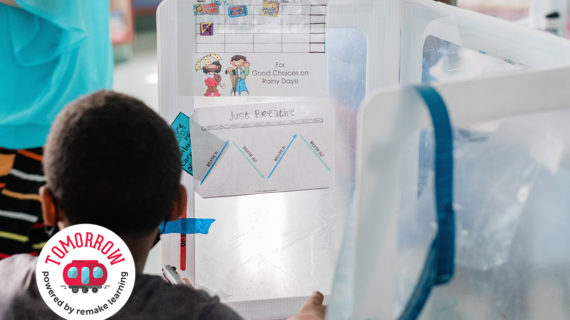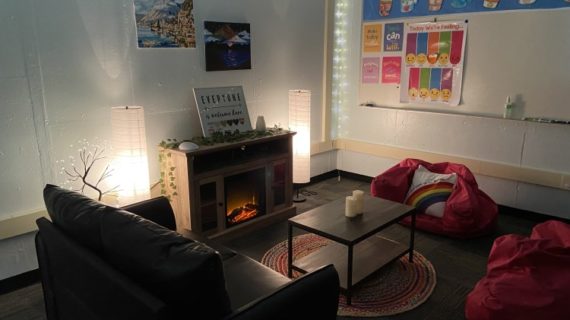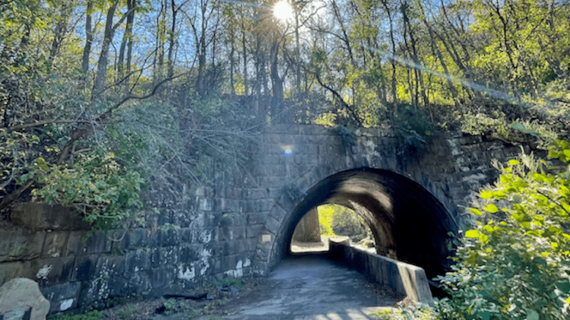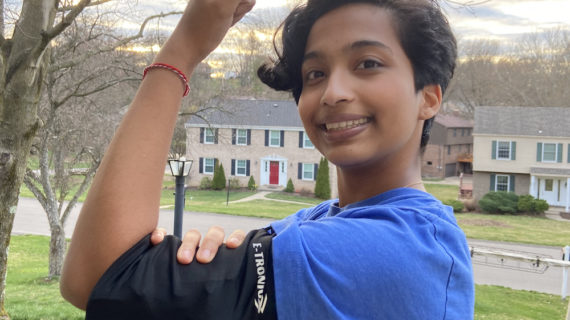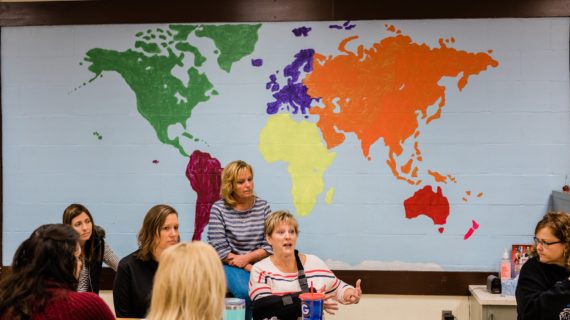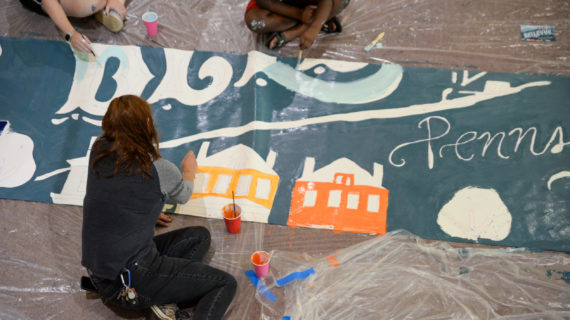
What is mindfulness? This easy guide can help families throughout the year.
Mindfulness is a phrase that’s been popping up a lot recently—particularly during such a rough year. It’s a path toward less stress and more peace, and it’s easy to practice at home with your kids. But let’s start at the beginning: What is mindfulness?
As a mom of four young kids who’ve been bouncing off the walls and battling with each other nonstop since the weather has shifted, I wanted a good answer to that question. So I decided to reach out to an expert in mindfulness and mediation to ask for some tips. Thankfully, I didn’t have to look far. My husband, Josh McKivigan, is a licensed therapist for Allegheny Health Network who regularly uses mindfulness and meditation with his clients as part of AHN’s Chill Project.
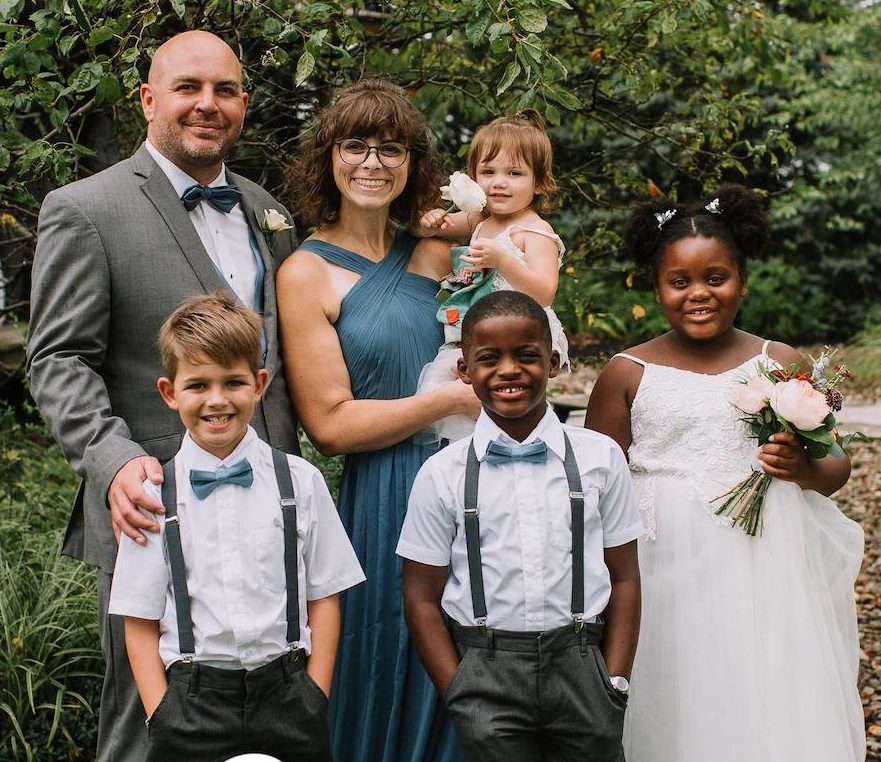
Here’s our conversation:
Meg: Tell me, what exactly is basic mindfulness?
Josh: Mindfulness is really just about, well, being mindful of our bodies and feelings. It is a set of activities and practices that help people develop an awareness of the present and examine the everyday stressors affecting their body.
Meg: OK, that sounds like a therapist talking. Which makes sense, because you are one. But what does mindfulness look like for parents to practice in their home?
Josh: Well, we want kids to be aware of their bodies. Particularly, how they are holding stress and feelings in their bodies so that they can work on managing those big feelings. A few steps I teach kids and parents are:
- Belly breathing: Begin by sitting comfortably. Parents can do this one-on-one with each child, or the whole family can do it together in their living space. If it feels safe to each person, they can close their eyes. All together, prompt your kids to take a deep breath through their nose and hold it while you count to three. Exhale slowly. Repeat this several times, prompting your kids to think about their breathing and focus on that rather than things around them.
- Mindful walking: As you know, early in the lockdown phase of the pandemic, our family took a lot of walks to maintain a sense of calm in our bodies. Kids like to run ahead and race, but there is a lot of benefit in slowing down the pace for brief moments. Pick a distance such as one block or a time frame like three minutes, and encourage the whole family to slow their pace. Prompt them to focus on their senses— what do they see, hear, taste, smell, and feel? Is the wind touching them, or are leaves blowing across their feet? Do they smell someone making a meal? Hear music from a car? If your mind wanders, that’s okay. Just acknowledge it, and bring yourself back to the present.
- Family time in the car: The family car is a great space to practice mindfulness. If your readers’ kids are like ours, it’s often a battle over what ice cream shop we will visit or who is touching who. Instead, try using that time to calm and center the family. Have everyone in the car observe or notice something along the journey they haven’t before. A house is painted a new color, the leaves are changing, someone put up a fence. Taking a few moments to focus on observing the world around them rather than fight about what song is on the radio is calming and centering.
Meg: Ok, those are a few great examples. I know we do some of them with our kids, but like with all things, life gets busy and hectic and even the “professionals” can forget to practice these proven methods. How can families make mindfulness a part of their everyday lives, rather than something that feels novel or forced?
Josh: Meditation can be done in just a moment. Families are often busy and the idea of adding another activity can be daunting and feel impossible. So try meditating together for just a moment. It can be right before you sit down to dinner or before rushing out the door to school. Here’s how it can work:
- Pick a time each day.
- Set a timer for one minute.
- If you have one, use a smart speaker or phone to play some relaxing Lo-Fi music.
- Sit up straight in your chair and put your hands on your legs. Slowly breathe in through your nose and let the breath out.
- Focus on what you hear around you and your senses. Right now, during this one minute, you are where you are supposed to be and nowhere else.
- Notice changes in your breathing. Are you breathing less through your chest and more in your stomach? Are you noticing less tension in your body? Chest breathing is a sign of stress. Belly breathing is a sign of calm.
- As you hear the timer go off, slowly open your eyes and appreciate the moment you just had. Don’t worry about perfection or silly kids, focus on the moment and the practice of adding daily meditation.
Meg: Other than sitting quietly or walking quietly, are there any tools that you like to use with kids and families?
Josh: If you have a family who enjoys art and coloring, mandalas are an excellent mindful activity. Put away your digital devices and turn off the TV while everyone works on their mandala. Saving a special set of nice markers or pencils for just this activity makes it feel special to kids.
- Start with five minutes and work your way up.
- Don’t spend time comparing your art to what others may be able to do.
- Focus on the present. Focus on the colors of your mandala. Observe the strokes of your colored pencils, markers or crayons.
- Appreciate the beauty you are creating. Appreciate the quiet and calmness around you.
- At the end, collect the mandalas and put them in a safe space so you can come back to them again.
The goal of all of these activities is to help families practice together how they can bring calmness to the stressors and challenges that they are facing. This builds more resiliency in kids. It can also help them improve planning, increase focus, and have less catastrophic thinking.
When you change the way you breathe and breathe into the present, you are slowing down your heart rate. This decreases stress hormones and improves brain function as your nervous system shifts away from the “fight, flight or freeze” mode many of us have been living in.
Just like with all new things, start simple. You are the expert of your family.
Meg: Thanks, this was helpful actually. It’s interesting to think about all the ways we could be incorporating this into our day. I think for our family, in the car and at the dinner table are two key times that seem to really go off the rails.
If any readers have questions about mindfulness or about how their school district could partner with the AHN Chill Project to bring mindfulness to their school, you’re welcome to reach out to Josh and me at megstesprit@gmail.com or contact AHN Chill Project at 412-650-1107.
And learn more about how the Chill Project is helping students throughout our region, including Clairton City School District and Carnegie Elementary.
